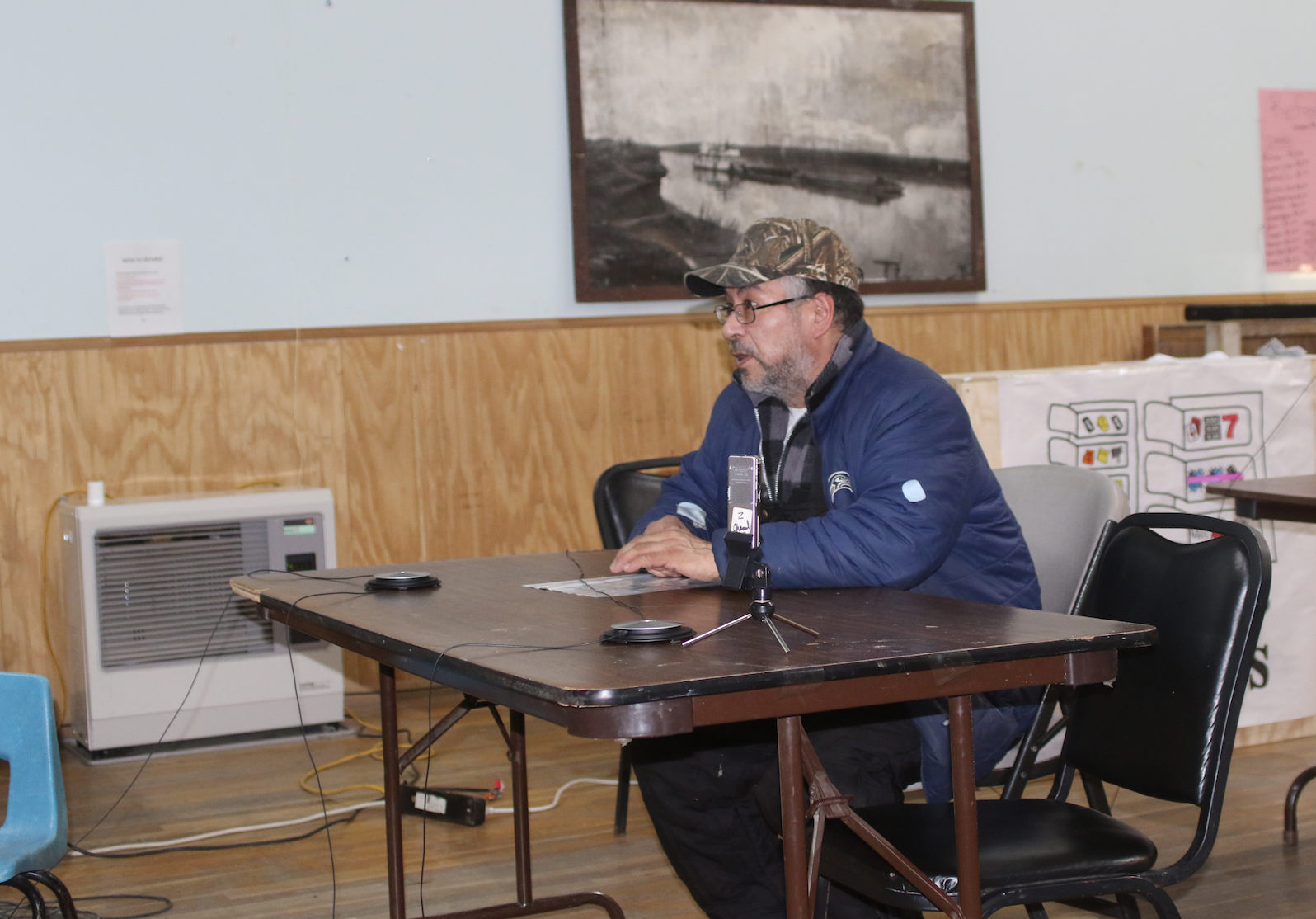
State regulators met with the public in Anchorage last Friday to discuss the permits for the proposed Donlin Gold Mine. The Alaska Department of Environmental Conservation has released two draft permits that tackle one of the mine’s thorniest issues: how the company plans to dispose of chemicals like arsenic next to a river of subsistence fishermen. Meetings were held in Aniak and Bethel earlier.
The Donlin Gold Mine is going to produce a lot of trash. It’ll suck thousands of gallons of water per minute out of the ground and use it, along with a chemical process involving cyanide, to help strip microscopic flecks of gold out of the rock. That leaves a lot of ground-up rock behind. According to DEC engineer Tim Pilon, the mine will generate a literal mountain of it.
“Where it’s a valley now?” Pilon asked. “They’re going to turn it into a hill.”
Contaminated water will drain from the mine pit or seep from its tailings, some of it tinged with chemicals like arsenic. And all of that waste needs somewhere to go.
According to the DEC’s draft permits, some of that waste is going to pour into Crooked Creek, a nearby waterway that teems with salmon in the summer. At peak production the Donlin Gold Mine will dump up to 4,500 gallons of wastewater a minute into the creek – though it would have to be treated first.
Over the past two weeks, the DEC has presented the permits at public meetings in Bethel and Aniak, where community members depend on the Kuskokwim River for their food. Many residents did not trust the plan put forth by the state for the mine.
“We are playing with our lives here,” Evon Waska said at the Bethel meeting. “They depend on the Kuskokwim River.”
Kathy Hanson of Bethel agreed.
“I don’t see why we have to take a risk with our land so that someone else gets to make money,” Hanson said.
According to DEC engineer Allan Nakanishi, the Donlin Gold Mine’s water treatment system would be “world class.” The DEC is imposing strict limits on the levels of certain chemicals, like arsenic, that the facility can release.
“Ten molecules out of a billion would be arsenic, and the rest would be water,” Nakanishi said. “That’s how low those values are.”
Waste that’s too dangerous to discharge will be contained on site. Any tailings exposed to the mine’s cyanide, for example, will be funneled into a large pond lined with thick plastic and then heavily monitored. Many local residents who spoke were skeptical about the monitoring, fearing the Donlin Gold Mine will be mostly “self-monitored” – in other words, regulating itself.
Aniak resident Dave Cannon is a former fish biologist. He doesn’t trust Donlin Gold to self-regulate and thinks an accident could inevitably happen. He also suspects the permitting process is deliberately confusing.
“It’s been overwhelming for me and I’m a professional biologist, to be honest with you,” Cannon said. “The draft of the Environmental Impact Statement stood what, 14, 15 inches high?”
Other community members put more faith in the company. Carl Morgan is a former state senator who’s also from Aniak. He used to work for Donlin Gold and showed up to our interview wearing the company’s jacket. He thinks the mine is worth the risk.
“We want the strictest regulation with Donlin,” Morgan said. “Yes, mother nature might do something, an earthquake or something. We can’t guarantee anything with mother nature.”
But Morgan says unemployment in Aniak is severe.
“There’s nothing better than a paycheck instead of a handout,” Morgan said. “People who are against a mine, they don’t see that.”
The mine still has a long way to go before it’s authorized; these are just two of dozens of permits that Donlin Gold needs. The DEC is holding its final public meeting today, but will accept written public comments on the permits until February 13.




